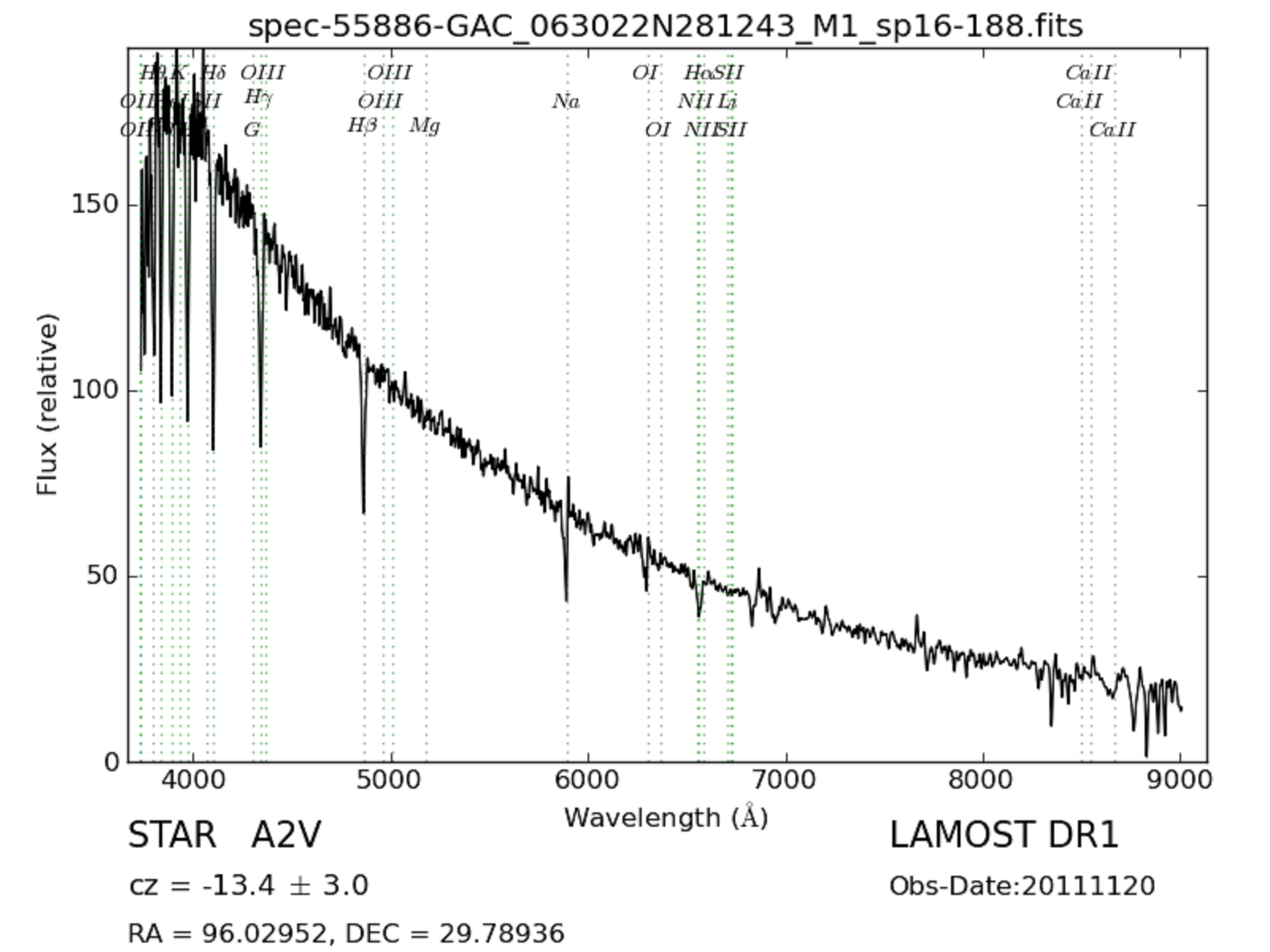You are here
A new method of searching for hot subdwarfs from the LAMOST survey
Hot subdwarf stars are a special type of stars lying between the main sequence and the white-dwarf sequence and have evolved far beyond the main sequence in H-R diagram. They can be mainly divided into two classes: B-type subdwarfs (sdBs), the core helium-burning stars at the blue end of the horizontal branch; O types subdwarfs (sdOs), the stars with a rich mixture of post red-giant branch, post-HB, and post-asymptotic giant-branch stars. The study of hot subdwarf stars can help us better understand the galaxies, globular clusters, stellar astrophysics, and supernova type Ia progenitor.
To better study the properties of these stars, we should find more hot subdwarf stars to enlarge the sample size. The traditional method of searching for hot subdwarfs from the large data sets is based on the color cuts followed by visual inspection. This method is not suitable for the data set without homogeneous colors such as the spectra obtained by LAMOST.
Recently, Bu Yude from Shandong University (Weihai), Lei Zhenxin and Zhao Gang from NAOC and others present a new method of searching for hot subdwarf stars in large spectroscopic surveys using a machine learning algorithm, hierarchical extreme learning machine (HELM) algorithm. They have applied the HELM algorithm to the spectra from the LAMOST survey, and classification errors are considerably small: for the single hot subdwarf stars, accuracy = 0:92 and efficiency = 0:96; and for the hot subdwarf binaries, accuracy = 0:80 and efficieny = 0:71. A comparison of the HELM and other popular algorithms shows that HELM is accurate and efficient in classifying hot subdwarf stars. This method provides a new tool for searching for hot subdwarf stars in large spectroscopic surveys. They have applied this method to the spectra from the LAMOST survey, and found around 10000 hot subdwarf candidates.
This study has been published on The Astrophysical Journal Supplement Series -- an internationally renowned astronomical journal. This work is supported by National Natural Science Foundation of China, Young Scholars Program of Shandong University, Weihai, Natural Science Foundation of Shandong Province, and China postdoctoral Science Foundation.

